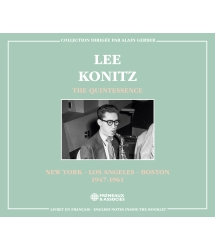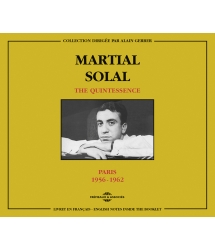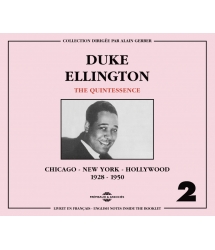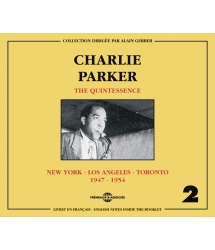- Our Catalog
- Philosophy
- Philosophers of the 20th century and today
- History of Philosophy (PUF)
- Counter-History and Brief Encyclopedia by Michel Onfray
- The philosophical work explained by Luc Ferry
- Ancient thought
- Thinkers of yesterday as seen by the philosophers of today
- Historical philosophical texts interpreted by great actors
- History
- Books (in French)
- Social science
- Historical words
- Audiobooks & Literature
- Our Catalog
- Jazz
- Blues
- Rock - Country - Cajun
- French song
- World music
- Africa
- France
- Québec / Canada
- Hawaï
- West Indies
- Caribbean
- Cuba & Afro-cubain
- Mexico
- South America
- Tango
- Brazil
- Tzigane / Gypsy
- Fado / Portugal
- Flamenco / Spain
- Yiddish / Israel
- China
- Tibet / Nepal
- Asia
- Indian Ocean / Madagascar
- Japan
- Indonesia
- Oceania
- India
- Bangladesh
- USSR / Communist songs
- World music / Miscellaneous
- Classical music
- Composers - Movie Soundtracks
- Sounds of nature
- Our Catalog
- Youth
- Philosophy
- News
- How to order ?
- Receive the catalog
- Manifesto
- Dictionnary











- Our Catalog
- Philosophy
- Philosophers of the 20th century and today
- History of Philosophy (PUF)
- Counter-History and Brief Encyclopedia by Michel Onfray
- The philosophical work explained by Luc Ferry
- Ancient thought
- Thinkers of yesterday as seen by the philosophers of today
- Historical philosophical texts interpreted by great actors
- History
- Books (in French)
- Social science
- Historical words
- Audiobooks & Literature
- Our Catalog
- Jazz
- Blues
- Rock - Country - Cajun
- French song
- World music
- Africa
- France
- Québec / Canada
- Hawaï
- West Indies
- Caribbean
- Cuba & Afro-cubain
- Mexico
- South America
- Tango
- Brazil
- Tzigane / Gypsy
- Fado / Portugal
- Flamenco / Spain
- Yiddish / Israel
- China
- Tibet / Nepal
- Asia
- Indian Ocean / Madagascar
- Japan
- Indonesia
- Oceania
- India
- Bangladesh
- USSR / Communist songs
- World music / Miscellaneous
- Classical music
- Composers - Movie Soundtracks
- Sounds of nature
- Our Catalog
- Youth
- Philosophy
- News
- How to order ?
- Receive the catalog
- Manifesto
- Dictionnary
AVEC, STAN GETZ • KENNY CLARKE • JIMMY GOURLEY • PIERRE MICHELOT • MARTIAL SOLAL
STAN GETZ
Ref.: FA5730
EAN : 3561302573021
Label : Frémeaux & Associés
Total duration of the pack : 1 hours 18 minutes
Nbre. CD : 1
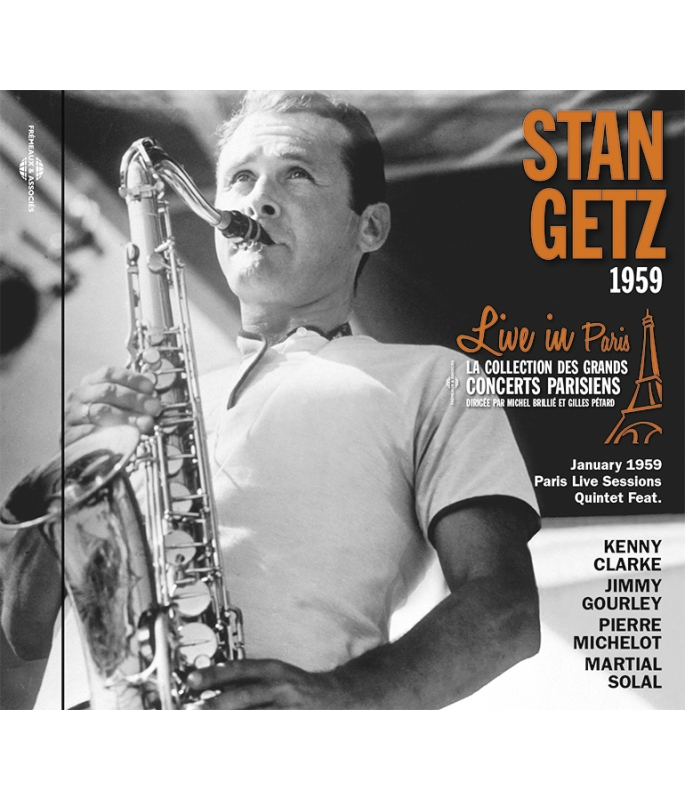
AVEC, STAN GETZ • KENNY CLARKE • JIMMY GOURLEY • PIERRE MICHELOT • MARTIAL SOLAL
AVEC, STAN GETZ • KENNY CLARKE • JIMMY GOURLEY • PIERRE MICHELOT • MARTIAL SOLAL
Stan Getz was one of the greatest stylists in jazz, and also among the best saxophonists in the history of the music. When he was recorded during his European exile, Getz was at one of the lowest points in his personal life, yet still at the summit of his art as a player: he was even referred to by his nickname, “The Sound”, given to him when he became the most eminent figure in West Coast jazz. His partners here are some of Europe’s best: French jazzmen Pierre Michelot and Martial Solal, and two great Francophiles, the Americans Jimmy Gourley and Kenny Clarke. Patrick FRÉMEAUX
The Live in Paris collection by Michel Brillié allows listeners to hear previously-unreleased recordings (made at concerts and private- or radio-sessions) by the great 20th stars in jazz, rock & roll and song. These “live” takes, and the artists’ rapport with their audiences, gives these performances an additional soul and sensibility in counterpoint to the rigorous demands of studio recordings. Particular care was taken when restoring the sound of these tapes in order to meet CD standards while preserving the original colours of the period. Patrick FRÉMEAUX & Gilles PÉTARD
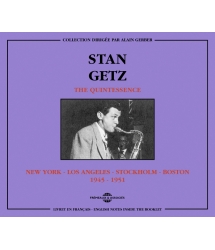
NEW-YORK - LOS ANGELES - STOCKHOLM - BOSTON 1945 -...
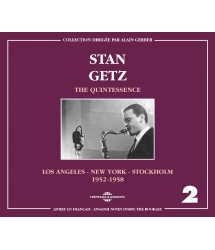
LOS ANGELES - NEW YORK - STOCKHOLM (1952-1958)
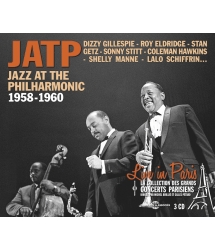
1958-1960



-
PisteTitleMain artistAutorDurationRegistered in
-
1CherokeeStan Getz, Kenny Clarke, Martial Solal, Pierre Michelot, Jimmy Gourley00:09:001959
-
2All The Things You AreStan Getz, Kenny Clarke, Martial Solal, Pierre Michelot, Jimmy GourleyOscar Hammerstein00:06:111959
-
3Lover ManStan Getz, Kenny Clarke, Martial Solal, Pierre Michelot, Jimmy GourleyJimmy Davis Ramirez00:04:081959
-
4Special ClubStan Getz, Kenny Clarke, Martial Solal, Pierre Michelot, Jimmy Gourley00:03:361959
-
5Round Bout MidnightStan Getz, Kenny Clarke, Martial Solal, Pierre Michelot, Jimmy GourleyCootie Williams00:06:171959
-
6Softy As In A Morning SunriseStan Getz, Kenny Clarke, Martial Solal, Pierre Michelot, Jimmy GourleyOscar Hammerstein00:10:041959
-
7TenderlyStan Getz, Kenny Clarke, Martial Solal, Pierre Michelot, Jimmy GourleyJack Lawrence00:05:071959
-
8The SquirrelStan Getz, Kenny Clarke, Martial Solal, Pierre Michelot, Jimmy Gourley00:05:011959
-
9Yardbird SuiteStan Getz, Kenny Clarke, Martial Solal, Pierre Michelot, Jimmy Gourley00:07:201959
-
10Too Marvelous For WordsStan Getz, Kenny Clarke, Martial Solal, Pierre Michelot, Jimmy GourleyJohnny Mercer00:07:081959
-
11TopsyStan Getz, Kenny Clarke, Martial Solal, Pierre Michelot, Jimmy GourleyEdgar Battle00:07:031959
-
12Over The RanbowStan Getz, Kenny Clarke, Martial Solal, Pierre Michelot, Jimmy GourleyHarburg Yip00:07:211959
fa5730 Stan Getz
Live in Paris
1959
Stan Getz
KENNY CLARKE
JIMMY GOURLEY
PIERRE MICHELOT
MARTIAL SOLAL
STAN GETZ Live in Paris 1959
The Sound in Paris
Par Philippe Lesage
Le 3 janvier 1959, Stan Getz se produit à l’Olympia ; il a 32 ans et il est considéré comme étant un des meilleurs saxophonistes ténors de l’époque selon les classements des revues Metronome et Down Beat. Celui que l’on surnomme « The Sound » est entouré de deux musiciens français : le contrebassiste Pierre Michelot et le pianiste Martial Solal ainsi que de deux américains : le batteur Kenny Clarke, installé en France depuis 1956, et le guitariste Jimmy Gourley. La présence de Kenny Clarke stimule Getz, lui qui se montrait toujours insatisfait des sections rythmiques européennes qu’il croisait alors que Martial Solal, qui reste à l’heure de la rédaction de ce livret le dernier témoin de l’évènement, tisse de manière magistrale un fil complice entre le soliste et le groupe.
Ce concert parisien, capté dans une grande salle dans des conditions optimales devant un public averti et non en club, s’inscrit dans le cadre de fréquentes tournées lors de l’exil volontaire du saxophoniste de 1958 à février 1961. Il venait d’épouser Monica Silfverskiold, une jeune aristocrate suédoise et il réside avec ses quatre enfants à Lyngby, banlieue huppée de Copenhague. Ce déracinement a une explication : en dépit de sa renommée, il venait de traverser une longue période d’épreuves (accident et coma de son fils, vie familiale inexistante, drogues dures, prison et santé chancelante). Débarrassé de ses addictions, il trouve une certaine tranquillité d’esprit, joue fréquemment au Café Montmartre, enregistre quatre titres dont un fabuleux « I Remember Clifford » avec le contrebassiste Oscar Pettiford, le pianiste suédois Jan Johansson et le batteur américain Joe Harris, donne des concerts avec le big band de la radio danoise et tourne en Europe où il joue avec des musiciens locaux.
De l’esthétique et du répertoire
Comment recouvrer l’innocence d’une première écoute quand on a toute la production de la longue vie artistique de Getz dans la tête ? C‘est une gymnastique simple : sur des plages au timing idéal, il suffit de se laisser porter par la beauté magique de la sonorité tout en fredonnant sur les variations autour de chaque mélodie. Le répertoire tourne autour de standards du Great American Songbook (Softly As A Morning Sunrise, Tenderly…), parfois revisités par les boppers (Cherokee ; All The Things You Are…) et d’une lecture personnelle des compositions des créateurs du Be Bop (Round Midnight de Monk, The Squirrel de Tadd Dameron sans oublier Yardbird Suite de Charlie Parker, the great musician comme l’annonce Getz lors du concert ). Celui qu’on appelait The Sound n’a pas d’imitateur car son style, soulignait-il lui-même, est trop simple (forfanterie d’un saxophoniste qui utilisait des anches très dures ?) et pour le qualifier, ce style, il faut jouer sur les épithètes et les analogies : « impalpable et voluptueuse qualité de son timbre » écrit Jacques Reda, » « élégance naturelle ; c’est une petite fêlure, émouvante par sa fragilité même » commente Alain Tercinet. De cette lecture inimitable des « songs », Martial Solal aurait déclaré (1) : Getz a tout renouvelé : la sonorité, j’adore la sienne, la conception harmonique, avec sa manière de tourner sans fin autour de l’accord ; la conception mélodique, enfin, gracieuse, élégante, raffinée ». Que dire de plus sans tomber dans une « getzophilie » béate de ce grand lyrique qui nous enveloppe dans un halo poétique à l’image de son modèle Lester Young ?
L’ombre et la lumière
Il ne vient pas de nulle part ; Getz a des racines et une carrière professionnelle initiée dès l’âge de seize ans. Brossons en quelques phrases ce parcours de vie. Né Stanley Gayestski le 2 février 1927, peti-fils d’un soldat juif du tzar devenu tailleur après l’émigration et d’un père imprimeur, il passe professionnel à seize ans en rejoignant l’orchestre de Jack Teagarden puis, de 1947 à 1949, celui de Woody Herman avec qui il enregistrera « Four Brothers » et « Early Autumn » qui établiront sa notoriété. Il n’a jamais reçu de leçons formelles de musique mais, passé par la dure école des big bands, il est devenu un très bon lecteur. Lorsqu’il quitte la côte Ouest pour venir s’installer à New York, il écume les clubs de la 52° rue où s’épanouit la révolution Be Bop et la virtuosité de Charlie Parker. Après son exil volontaire en Europe, de retour aux USA en février 1961, déjà rejeté aux marges de l’actualité, il comprend qu’il ne peut rivaliser avec Coltrane. Sans se renier, Il épouse alors un virage, en 1962, avec le disque Jazz Samba réalisé avec le guitariste Charlie Byrd et remporte le jackpot avec « Girl From Ipanema » qui fera que sa notoriété mordra auprès du grand public tout en brisant son image auprès des puristes du jazz (Getz n’en démord pas : « la bossa nova sera toujours l’un de mes amours ; musicalement, elle est très riche ») (2). Mais c’est une autre histoire comme l’est celle de l‘écartèlement de sa personnalité double entre ange et démon. Marqué par la confrontation avec les junkies et la pègre, par la compétition inexorable entre musiciens, son comportement social est sans rapport avec la tendresse qu’expulse sa musique. Un jour, son épouse Monica confiera à un biographe : « Il ne comprenait pas le monde, se méfiait de tous, se réfugiait derrière un mur de ressentiment, blessant les gens avant qu’ils ne le blessent ». Qu’importe ; pour nous, sa part de vérité, il l’exprime dans son art.
Philippe LESAGE
© Frémeaux & Associés 2018
Merci à Claude Carrière pour son aide.
1- Cité par Alain Tercinet dans Stan Getz, éditions du Limon
2- Entretien avec Jean – Louis Ginibre pour Jazz Magazine, en août 1971
STAN GETZ Live in Paris 1959
The Sound in Paris
By Philippe Lesage
Stan Getz played at the Olympia in Paris on January 3, 1959. He was thirty-two, and the polls published in America by the magazines Metronome and Down Beat showed he was considered one of the best tenor saxophonists of his time. That day in Paris, the man they called “The Sound” had two French musicians alongside him onstage, bass player Pierre Michelot and pianist Martial Solal, plus two Americans, the drummer Kenny Clarke, who went to France in 1956 and was still living there, and guitarist Jimmy Gourley. Up until then, Getz had shown little satisfaction with the rhythm sections he’d encountered in Europe, but Kenny Clarke’s presence stimulated the tenor player, whilst pianist Martial Solal — at the time of writing, the only surviving eye-witness to the proceedings — played like a master, constantly weaving the ties that bind the soloist to his partners.
That Parisian concert was recorded — the takes were taped under optimal conditions, and in front of a knowledgeable crowd in a large venue, not in a club — during one of the frequent tours that Getz undertook during his voluntary exile in Europe from 1958 to February 1961. Stan had just married a young Swedish aristocrat, Monica Silfverskiold, and they were living with his four children in Lyngby, a comfortable Copenhagen suburb. Getz’ separation from his roots had an explanation: despite being famous, his life had been sorely put to the test: an accident had placed his son in a coma; his family life was inexistent; and he had drug problems, not to mention a prison term and failing health. Once rid of his addiction, he found a certain serenity again, playing frequently at the Café Montmartre (where he recorded four titles including a fabulous version of I Remember Clifford with the Americans Oscar Pettiford on bass and Joe Harris on drums, plus Swedish pianist Jan Johansson), giving concerts with the Danish Radio big band, and playing on tour in Europe with local musicians.
On aesthetics and repertory
How does one regain the innocence of a first listening, when one has the entire production of Stan Getz’ long life as an artist in one’s head? It’s a simple matter of gymnastics: with tracks whose timing is ideal, all it takes is to let oneself be transported by the magical beauty of the sound while humming along with the variations on each melody. The material in his repertoire revolves around standards taken from The Great American Songbook (Softly As In A Morning Sunrise; Tenderly …), sometimes revisited by boppers (Cherokee; All The Things You Are…), and personal readings of works by Bebop’s creators, like ‘Round Midnight (by Monk), The Squirrel (Tadd Dameron) and especially the Yardbird Suite by Charlie Parker, “the great musician” as Getz says during the concert.
As for the man called “The Sound”, he had no imitators because his style, as he himself would emphasize, was too simple (the boastfulness of a saxophonist who used very hard reeds?) and to describe that style would need recourse to epithets and analogies: the “impalpable and voluptuous quality of his timbre,” wrote Jacques Reda; “a natural elegance… a slight crack, moving by its very fragility,” commented Alain Tercinet. On the subject of this inimitable reading of such songs, Martial Solal is said to have observed, “Getz renewed everything: the sound, and I adore his own, the harmonic concept, with his manner of endlessly revolving around the chords; and finally the conception of the melody, which has grace, elegance and refinement”. 1 What more can one say without falling into a blissful getzophilia at the sound of this immensely lyrical musician wrapping us inside a poetic halo?
Shadow and light
Stan Getz did not come from nowhere; he had roots, and he made his professional debut aged sixteen. A few lines suffice to provide an outline. Born Stanley Gayetski on February 2, 1927, his grandfather was a Jewish soldier in the army of the Tsar (he became a tailor after emigrating), while his father was a printer. At 16, Stan joined Jack Teagarden’s orchestra, and then worked from 1947 to 1949 with the ensemble led by Woody Herman, with whom he recorded “Four Brothers” and “Early Autumn”. They made him famous. He never had any formal music training but, thanks to the hard schooling of big bands he became an excellent sight-reader. When he left the West Coast and moved to New York, he played in all the 52nd Street clubs where the bebop revolution — together with the virtuosity of Charlie Parker — was flourishing. He would go into voluntary exile in Europe, only to return in February 1961 to the USA where, already in the margins of the news, he realised would never challenge John Coltrane. Without going back on what he’d already achieved, he reached a turning point in 1962 and released the album Jazz Samba with guitarist Charlie Byrd… and later hit the jackpot with The Girl From Ipanema, which brought him to the attention of a mass audience while at the same time ruining his image among jazz purists. It would have no effect on Getz: “Bossa nova will always be a love of mine; it’s very rich musically,” he said.2 But that’s another story, like his personality, split between angel and demon. Marked by confrontations with junkies and the Mafia, and by the inexorable rivalry between musicians, his behaviour in society bore no relation to the tenderness breathing from his music. His wife Monica would say to a biographer, “He didn’t understand the world. He was wary of everyone, taking refuge behind a wall of resentment and hurting people before they could hurt him.” But no matter; where we are concerned, his artistry expresses his truth.
Philippe LESAGE
Adapted Into English by Martin DAVIES
© Frémeaux & Associés 2018
Thanks to Claude Carrière for his assistance.
1. Alain Tercinet, Stan Getz, publisher Editions du Limon
2. In interview with Jean-Louis Ginibre, Jazz Magazine, August 1971
STAN GETZ - Live in Paris - 1959
1. Cherokee (Ray Noble) 9’00
2. All the Things You Are (Oscar Hammerstein - Jerome Kern) 6’11
3. Lover Man (Jimmy Davis Roger (“Ram”) Ramirez - James Sherman) 4’08
4. Special Club (Martial Solal) 3’36
5. Round ‘Bout Midnight (Jon Hendricks / Cootie Williams - Thelonious Monk) 6’17
6. Softly As in a Morning Sunrise (Oscar Hammerstein / Sigmund Romberg) 10’04
7. Tenderly (Jack Lawrence / Walter Gross) 5’07
8. The Squirrel (Tadd Dameron) 5’01
9. Yardbird Suite (Charlie Parker) 7’20
10. Too Marvellous for Words (Johnny Mercer / Richard Whiting) 7’08
11. Topsy (Edgar Battle - Eddie Durham) 7’03
12. Over the Rainbow (Yip Harburg / Harold Arlen) 7’21
Recorded by:
Europe N°1 Technical Staff
Recording Dates:
Tracks 1 to 9: January 3, 1959
Tracks 10 to 12: probably first week January 1959
Recording Places:
Tracks 1 to 9: Olympia Theater, Paris, France
Tracks 10 to 12: Studio Pyramides, Europe N°1 Radio, Paris, France
Produced by:
Daniel Filipacchi & Frank Ténot
Personnel
Kenny Clarke drums
Stan Getz tenor sax
Jimmy Gourley guitar
Pierre Michelot bass
Martial Solal piano
La collection Live in Paris :
Collection créée par Gilles Pétard pour Body & Soul
et licenciée à Frémeaux & Associés.
Direction artistique et discographie :
Michel Brillié, Gilles Pétard.
Coordination : Augustin Bondoux.
Conception : Patrick Frémeaux, Claude Colombini.
Fabrication et distribution : Frémeaux & Associés.
Dedicated to Claude Boquet, Bill Dubois, Jean Claude, Philippe Moch, Raymond Treillet and the gang
Stan Getz est parmi les plus grands stylistes du jazz et l’un des meilleurs saxophonistes de l’histoire de la musique. Enregistré pendant son exil européen, au moment où Getz traverse le creux de la vague du point de vue de sa vie personnelle. Pourtant, celui qui est surnommé « The Sound » et qui est alors le plus éminent représentant du jazz West Coast est au sommet de son art. Il est entouré des meilleurs musiciens en Europe : la paire française Pierre Michelot, Martial Solal et les plus Français des jazzmen américains Jimmy Gourley, Kenny Clarke.
Patrick FRÉMEAUX
Stan Getz was one of the greatest stylists in jazz, and also among the best saxophonists in the history of the music. When he was recorded during his European exile, Getz was at one of the lowest points in his personal life, yet still at the summit of his art as a player: he was even referred to by his nickname, “The Sound”, given to him when he became the most eminent figure in West Coast jazz. His partners here are some of Europe’s best: French jazzmen Pierre Michelot and Martial Solal, and two great Francophiles, the Americans Jimmy Gourley and Kenny Clarke.
Patrick FRÉMEAUX
The Live in Paris collection by Michel Brillié allows listeners to hear previously-unreleased recordings (made at concerts and private- or radio-sessions) by the great 20th stars in jazz, rock & roll and song. These “live” takes, and the artists’ rapport with their audiences, gives these performances an additional soul and sensibility in counterpoint to the rigorous demands of studio recordings. Particular care was taken when restoring the sound of these tapes in order to meet CD standards while preserving the original colours of the period.
Patrick FRÉMEAUX & Gilles PÉTARD
La collection Live in Paris, dirigée par Michel Brillié, permet de retrouver des enregistrements inédits (concerts, sessions privées ou radiophoniques), des grandes vedettes du jazz, du rock & roll et de la chanson du XXe siècle. Ces prises de son live, et la relation avec le public, apportent un supplément d’âme et une sensibilité en contrepoint de la rigueur appliquée lors des enregistrements studios. Une importance singulière a été apportée à la restauration sonore des bandes, pour convenir aux standards CD tout en conservant la couleur d’époque.
Patrick FRÉMEAUX & Gilles PÉTARD
